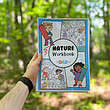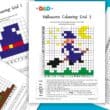-
3-4
-
5 to 20 min
-
Easy
Shadow tracing is a simple but effective way to inspire children’s creative development. In using toys and items that interest them, their imaginations will spark, with the bonus of learning about the world around them, such as the sun’s position and how shadows are formed and helping to develop pencil grip and visual coordination.
What you’ll need
Step by Step Instructions
Set a table with paper and colouring pencils at the ready. Outside would be ideal, if it is a sunny day, or inside with an alternative light source, such as a lamp, if the weather is grey. Ask your child to choose the animals, items of figures they would like to draw around.
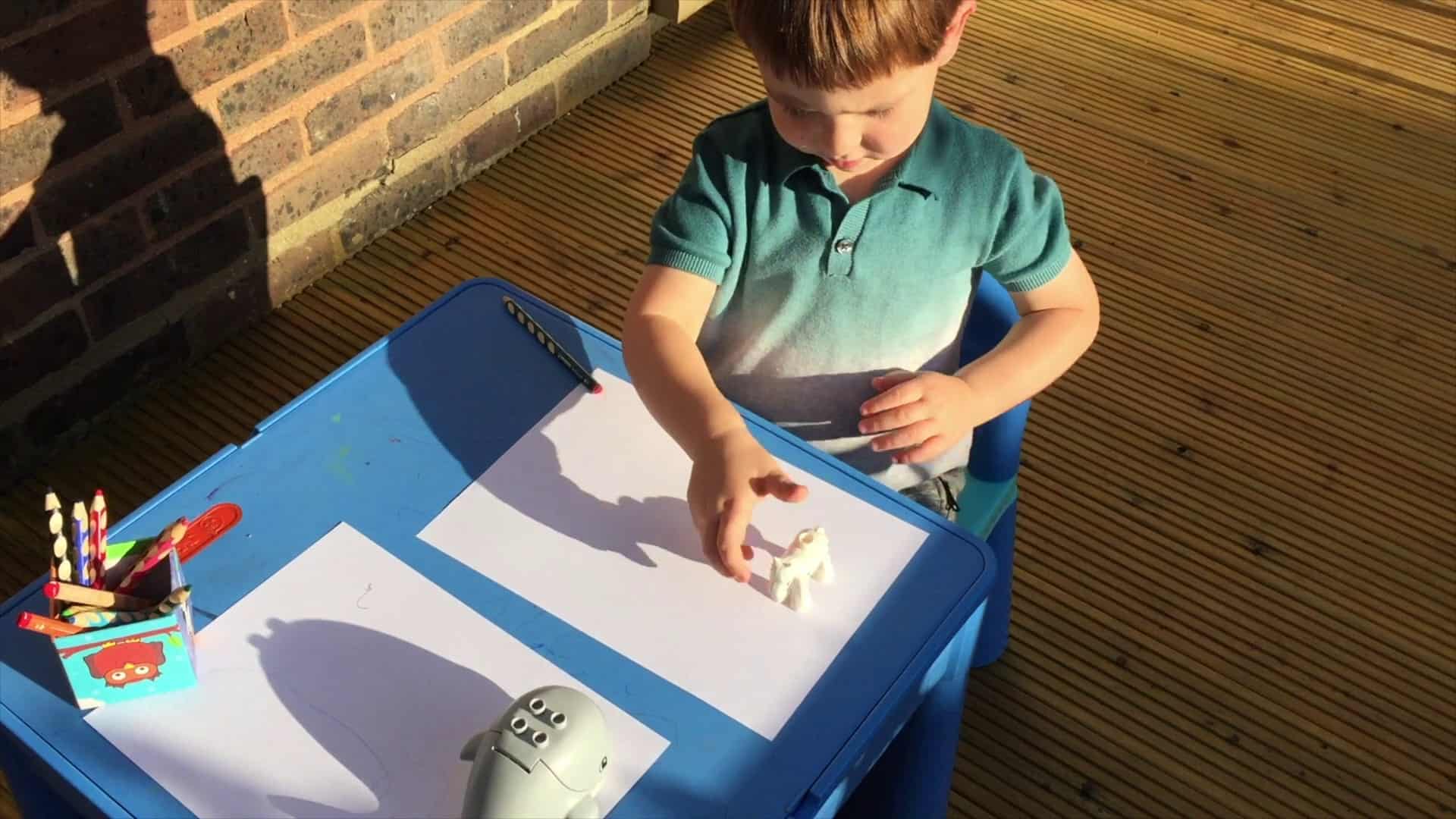
Place the figure at the bottom of the page to block the light and create a shadow. Your child may need help adjusting this if they are younger. Show the children the outline and how to draw around it.
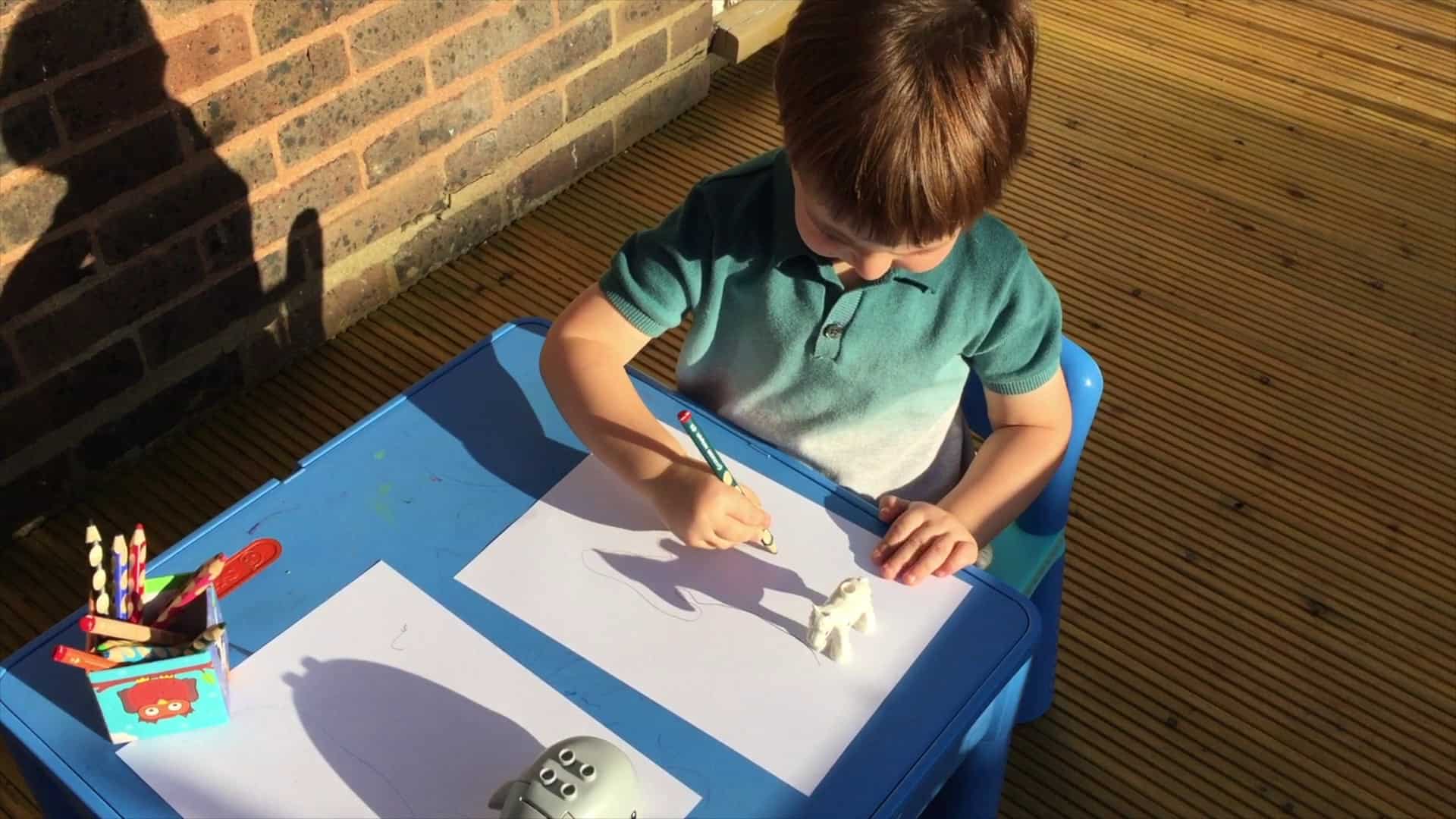
Allow your child to choose another animal they like and keep going until they have enjoyed it enough.
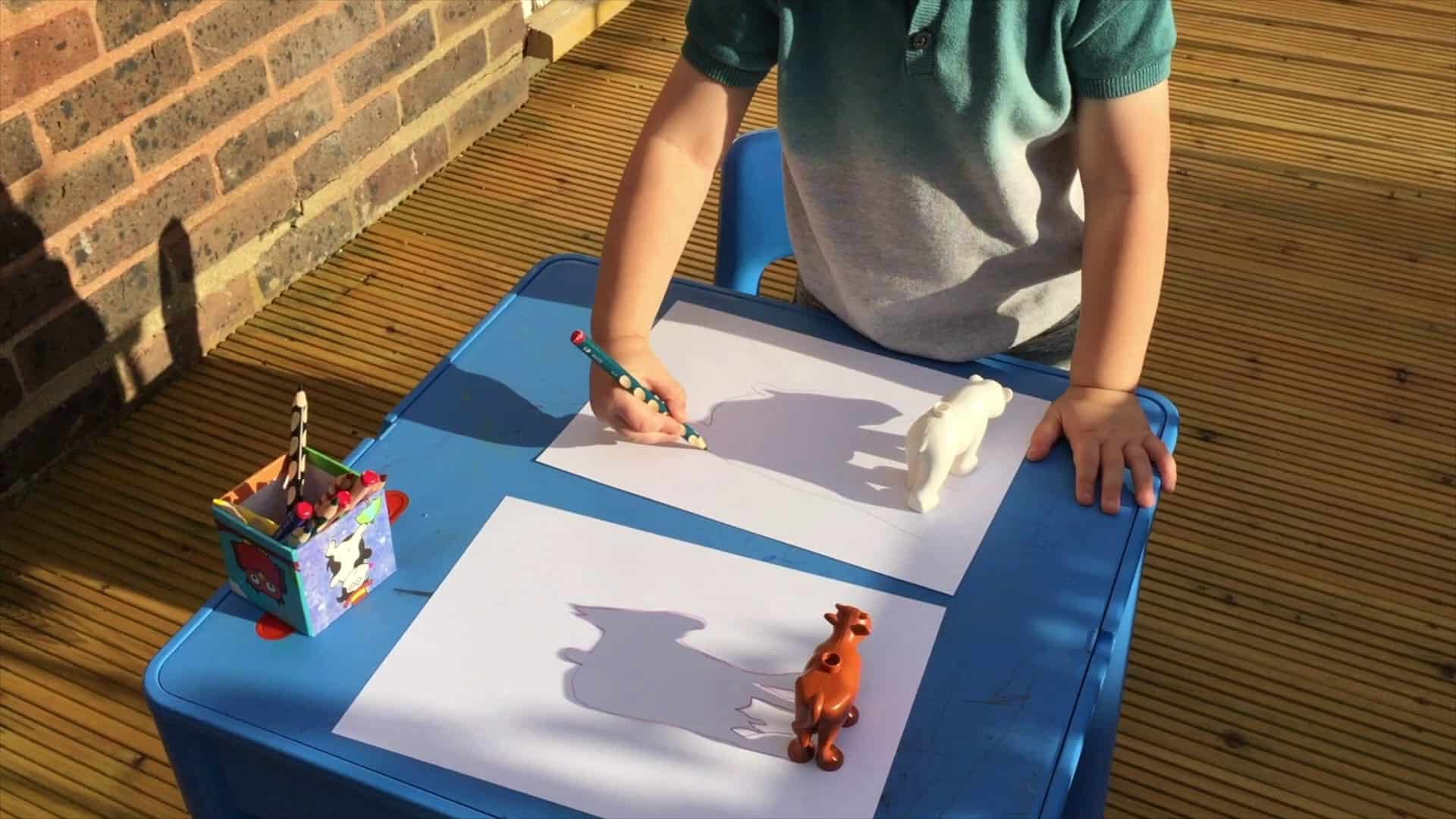
Providing activities that develop motor skills are always going to be beneficial to toddlers and young children. The development of motor skills begins as soon as life begins. They start by reaching and grabbing, shuffling and crawling and eventually running and throwing. All of these are imperative for a child’s development, and the more they do these things and are allowed to practice, the sooner their strength will build, and they can begin to become masters of their skills. It is important to remember that every child is different and will develop at their own pace. It will take time for children to gain visual coordination, strength, and control to manipulate smaller objects how they desire. However, any kind of manipulative activities, including playdough, digging, and water play, are lovely for this developmental area. As a child’s gross motor skills progress, their fine motor skills will begin to follow, and these are the building blocks of simple mark-making and eventually writing.
There are many different varieties of activities that develop fine-motor skill. This particular activity is a lovely straight forward one, with minimal preparation and can continue for as long as their interest remains. You can see in the video how much the child is enjoying this activity. He is in deep concentration and focused on following the outline as best he can. He is comfortable and has selected the toys that are of interest to him. He has also learnt how to set up this activity independently. It may be that your child, depending on their age, will need some help in where to place their toy. It may also be that they need help is working out the dynamics of which way to draw around the item, making sure they don’t nudge it from its original place. If this is the case, provide plenty of modelling and support in how to do it. Of course, the younger child will not maintain their attention and focus for as long and may become frustrated if it doesn’t turn out quite how they had planned; however, this is a brilliant practice in building resilience, perseverance and stamina.
From the video, you can also see that the children enjoy drawing around several different animals of their choice. The beauty of creative development, and this activity, is that the children can now take this whichever direction they wish. They may choose to continue practising drawing around the animals, or they may choose to use their creativity to continue with a picture and express themselves, maybe with paint or collage.
Without realising, the children will also be learning fundamental lessons about the sun. They will know swiftly that this activity isn’t possible without the sun or a light source, and therefore all shadows require this. They will also begin to understand that creating a block in the way of the sun’s light will cause that shadow. Lastly, as the size and length of the shadow vary, they will realise that this depends on where the light source is. The joy of this activity is that it is easy to adapt or extend based on your child.
As with any activity aimed at young children, always remember to keep it fun and an enjoyable experience for both you and your child. It can be a valuable time for you to be doing something together, and if your child is not having fun, why not try a different activity on the website and come back to this another day.
Variations of shadow tracing activity
- If your child does not show interest in animals or do not have any at home, why not try something different? A rocket or the other vehicle would work just as well.
- You could add a theme, such as Easter shadow tracing, and provide polystyrene eggs, bunnies and chicks.
- Provide a range of mark-making materials, such as coloured pens and pens with different textures and scents. These smells and textures will add a sensory aspect to the activity too.
- For younger children, who are still developing their fine motor skills, you may use larger paper to give them space to draw.
- For older children, allow them to take their activity further. They may want to paint or collage on it, create a background or experiment with creating shadows on other parts of their paper to make a scene.
Skills Learned
- Fine motor skills
- Understanding the world- the sun and shadow
- Patience and perseverance
- Creative development


